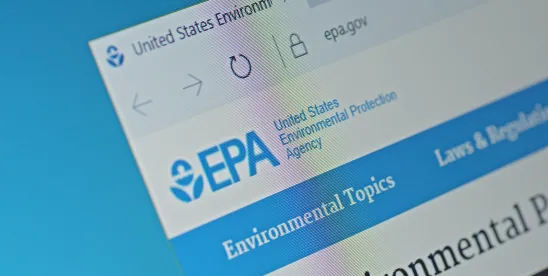On June 11, 2024, the U.S. Environmental Protection Agency (EPA) published proposed significant new use rules (SNUR) for certain chemical substances that were the subject of premanufacture notices (PMN) and are also subject to a TSCA Order, including multi-walled carbon nanotubes (generic) (P-21-216 and P-21-217). 89 Fed. Reg. 49121. The SNURs would require persons who intend to manufacture (including import) or process any of these chemical substances for an activity that is proposed as a significant new use by this rule to notify EPA at least 90 days before commencing that activity. The required notification initiates EPA’s evaluation of the conditions of use for that chemical substance. In addition, the manufacture or processing for the significant new use may not commence until EPA has conducted a review of the required notification, made an appropriate determination regarding that notification, and taken such actions as required by that determination. Comments are due July 11, 2024.
According to the proposed SNUR, the PMNs for multi-walled carbon nanotubes (generic) (P-21-216 and P-21-217) state that the generic (non-confidential) use will be as an additive in electrode materials and plastics (P-21-216) or as an additive in electrode materials and thermoplastics, and a component in electrodes (P-21-217). EPA states that based on comparison to analogous carbon-based nanomaterials, it has identified concerns for lung toxicity, lung fibrosis, lung cancer, pleural toxicity (inflammation), pleural fibrosis, and pleural cancer (mesothelioma). Based on hazard data for a residual and test data for multi-walled carbon nanotube analogues, EPA also identified concerns about acute neurotoxicity, skin and respiratory sensitization, reproductive and developmental toxicity, lung effects, systemic effects, immunotoxicity, eye and skin irritation, mutagenicity, genotoxicity, and carcinogenicity. EPA was unable to estimate the environmental hazard of the PMN substances. EPA issued the Order under TSCA Sections 5(a)(3)(B)(ii)(I) and 5(e)(1)(A)(ii)(I), based on a finding that in the absence of sufficient information to permit a reasoned evaluation, the substances may present an unreasonable risk of injury to human health or the environment. To protect against these risks, the Order requires:
- Use of personal protective equipment (PPE) where there is a potential for dermal exposure;
- Use of a U.S. National Institute for Occupational Safety and Health (NIOSH)-certified particulate respirator with an assigned protection factor (APF) of at least 1,000 if the capture and reduction rate is at least 99.5 percent but not 99.975 percent or greater, or an APF of at least 50 if the capture and reduction rate is at least 99.975 percent, where there is a potential for inhalation exposure;
- No domestic manufacture of the PMN substances (i.e., import only);
- No manufacture of the PMN substances to contain the confidential impurity listed in the Order at greater than one percent (by weight);
- No use of the PMN substances other than for the confidential use allowed in the Order;
- No processing or use of the PMN substances other than in application methods that do not generate a vapor, mist, dust, or aerosol unless such application method occurs in an enclosed process;
- No disposal of the PMN substances or waste streams containing the PMN substances other than by landfill or incineration;
- No release of the PMN substances directly, either by point (stack) or non-point (fugitive) sources, to air;
- No release of the PMN substances, or any waste stream containing the PMN substances, into water; and
- Establishment of a hazard communication program, including human health precautionary statements on each label and in the safety data sheet (SDS).
The proposed SNUR would designate as a “significant new use” the absence of these protective measures.
According to the proposed SNUR, EPA has determined that certain information may be potentially useful in support of a request by the PMN submitter to modify the Order, or if a manufacturer or processor is considering submitting a significant new use notice (SNUN) for a significant new use that will be designated by this SNUR. EPA states that it “has determined that the results of carcinogenicity, eye irritation, skin irritation, genetic toxicity, developmental toxicity, and aquatic toxicity testing may be potentially useful to characterize the health and environmental effects of the PMN substances.” Although the Order does not require these tests, EPA notes that the Order’s restrictions remain in effect until the Order is modified or revoked by EPA based on submission of this or other relevant information.




 />i
/>i
